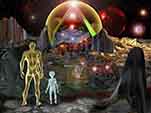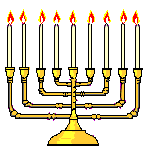Friday January 26 1:04 PM ET
Thousands Feared Dead in Indian Quake
By Kamil Zaheer
AHMEDABAD, India (Reuters) - Thousands of people were feared dead after a powerful earthquake rocked western India on Friday, toppling buildings and burying hundreds of residents.
The Press Trust of India (PTI) said that more than 1,500 people had died so far, including 1,000 in the small town of Bhuj, near the epicenter of the earthquake.
But the Home Minister of the coastal state of Gujarat, which bore the brunt of the disaster, told Reuters he believed the eventual death toll would be much higher.
``I expect the figure now to be in the thousands,'' Haren Pandya said.
As night closed in, rescue workers were struggling through the debris in search of survivors while hundreds huddled out in the streets too afraid of aftershocks to go inside again.
Prime Minister Atal Behari Vajpayee urged relief workers to go on a war-footing to help victims of the earthquake, the most intense to hit India in half a century.
Communications with Bhuj, a town of some 150,000 people near the Pakistan border, were severed, though officials said that aerial pictures showed 90 percent of its buildings had been damaged.
``Bhuj is the worst affected. I expect the toll to be very big in Bhuj. We have not been able to set up proper communication with Bhuj as yet,'' Pandya said.
In Ahmedabad, a dusty sprawling town of some five million and commercial capital of Gujarat, at least 400 people died as the quake toppled around 80 buildings.
Pandya said that there were at least 30 to 40 people still alive under the debris.
``We don't know how many there are but there are many,'' Daulat Ram, police spokesman in Ahmedabad, said.
Police reported more deaths in towns across the state, a prosperous agricultural belt stretching to India's western coast.
The quake, measured at 7.9 on the Richter scale by the U.S. Geological Survey, hit early in the morning as many families were preparing to celebrate Republic Day, the anniversary of its
transition to a republic in 1950.
It sent tremors to Nepal in the north, Madras in the south and into neighboring Pakistan, where at least eight people were killed in the southern Pakistani province of Sindh.
``It was like being on a swing. Nobody could get out for those 20 or 30 seconds,'' said Vinay Kumar, who works for Gujarat Petroleum Corp in Ahmedabad.
Residents of Ahmedabad said the tremors lasted for about 45 seconds from 8:46 a.m. (0316 GMT) and sent people scurrying from their homes.
By late afternoon hospitals were crammed to overflowing with injured people. Firemen used chain saws and drills to reach people trapped in the rubble, while others joined the rescue workers to dig with their bare hands.
Some, their faces paralyzed with fear, simply waited for help to arrive while others complained loudly about the delay in bringing in cranes to lift heavy rubble.
Television pictures showed mangled piles of masonry and twisted metal and the bloodied body of a small child. Elsewhere, a foot protruded from a heap of debris.
Pakistan Ruler Sends Condolences
Pakistan military ruler General Pervez Musharraf, putting aside differences with India over the disputed state of Kashmir, wrote to Indian Prime Minister Atal Behari Vajpayee expressing sorrow
for the deaths.
``I have been saddened at the tragic loss of life and property in the earthquake which hit large parts of India today,'' he said in a message of sympathy. ``The government and people of Pakistan share the grief of the bereaved families.''
In Washington, President George W. Bush offered assistance in the rescue operation and sent condolences to the people of western India and those affected in neighboring Pakistan.
It was the world's second major quake of the year. On January 13, a quake measuring 7.6 on the Richter scale killed at least 700 people in El Salvador and made 10 percent of that country's
population homeless.
A 1999 quake measuring 7.6 on the Richter scale killed more than 2,400 people in Taiwan.
Officials said there was no evidence of extensive industrial damage in Gujarat. The region's oil refineries were undamaged, as was a 1,230 km (769 mile) LPG pipeline running from western India
to just north of New Delhi.
However, a shipping ministry official said operations at India's busiest port, Kandla, had been partially affected. He could give no details.
Kandla serves the hinterland of western, central and northern India. It handles crucial imports of petroleum products, crude oil and chemicals and exports of agricultural commodities.
Ahmedabad itself is home to one of India's largest gold markets and is a leading oilseed trading center. It also produces textiles and chemicals.
Vajpayee called an emergency federal cabinet meeting to discuss the quake, while army battalions and aid workers rushed to the region. Many of the survivors were expected to spend the night
outdoors. Nights are cool in Gujarat, but not chilly.
The last time that Gujarat, which is prone to tremors of up to seven on the Richter scale, suffered a quake of such intensity was in 1819.
The Meteorological Department said the epicenter of Friday's earthquake was in an area 20 km (13 miles) north-east of Bhuj in the marshy and sparsely populated Rann of Kutch, which lies on the border with Pakistan.
The last major earthquake to hit India was in March 1999. Measuring 6.8 on the Richter scale, the quake and its aftershocks killed 100 people and injured 300 in the Himalayan foothills.
A 1950 quake in the Indo-China border area measured 8.6 on the Richter scale. It killed hundreds of people.
-----





































